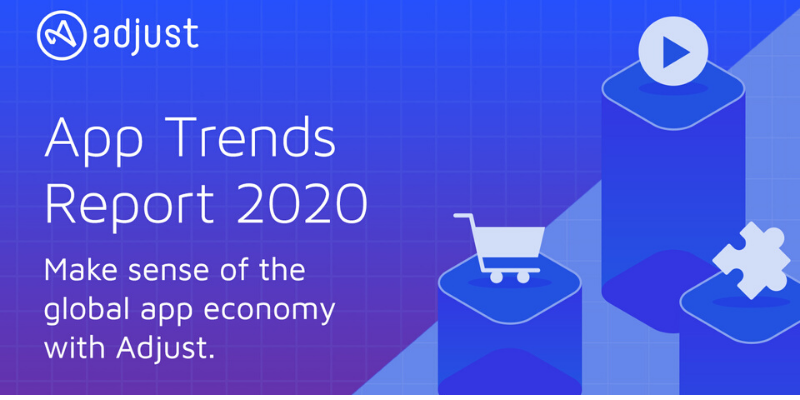The outbreak of COVID-19 had a huge influence on mobile app consumer behaviour during Q1 2020. As social distancing measures took effect across the globe, users turned to their devices to stay entertained at home and to connect with each other.
The customer journey has become complex and unpredictable, demanding marketers to think, act and manage campaigns in real-time. This is especially true for gaming, e-commerce and entertainment verticals. They have experienced unique challenges and opportunities in the first quarter of the year - be it sizable growth, an increasingly competitive marketplace or more complex customer journeys.
“Each vertical’s response to COVID-19 offers useful insights into the overall health of the app economy. Focusing on these verticals means we can offer actionable insights that any app marketer - whatever the industry they work in - can use to navigate this year’s changing trends,” shares Shubham Jha, Sales Manager India at Adjust, the mobile measurement company that works with over 2,000 advertising partners and 30,000 customers.
Detecting the signs of major shifts in the app economy and moving fast enough to take advantage of them will be vital for marketers in 2020. To help app marketers and other stakeholders in recognising these shifts, Adjust has released the ‘App trends 2020 - A global benchmark of app performance.’
This report focuses on long-term trends based on data from 2019, and also includes an analysis from data gathered in Q1 2020 to provide some perspective of how COVID-19 has affected the app economy so far.
Smarter marketing, automation to underpin app marketing strategies
The growing app economy means that acquiring new users is becoming more competitive than ever, so marketers need to be increasingly strategic about their marketing campaigns. To achieve this, personalisation and optimisation are key. As a result, mobile marketing has evolved from "putting out as much advertising as possible" to "putting out the smartest marketing possible."
This shift has also been accelerated by the uptake in marketing automation tools, specifically when it comes to campaign management and bidding optimisation. This has traditionally been done manually, and can be a painstaking and time-consuming task. Automation has the power to change that, allowing for things that would never have been possible before.
“This means smaller teams will be able to compete with larger marketing departments, and for teams with tighter resources, automation lets them spend their budget more effectively, with campaigns tailored to far more users,” says Shubham.
Moving beyond app stores to drive user acquisition
As organic discovery continues to reduce, app marketers looking to acquire new users must either pay more to keep up, or turn to alternative channels to find new audiences. App store lists are dominated by big-name brands and studios, whilst the likelihood of a user going to the stores to discover new apps has declined significantly.
“With over 10+ years of app stores being around, users are already very saturated with all kinds of apps. The likelihood of a user going to a store to browse or discover new apps has declined significantly, compared to the early days of the stores,” says Christian Eckhardt, CEO & Co-founder of Customlytics.
But as more apps become monetised by showing ads, the opportunities to reach new and more targeted audiences has also grown.
“Marketers should place less emphasis on their organic ranking and focus now on attracting users from outside the stores. To do that, brands will need to make their creatives as tailored as possible, and make sure they’re placed where their target audiences are,” says Shubham.
Retargeting and re-engaging users now more important than ever
While user acquisition remains a key part of any marketing strategy, marketers of all stripes need to add retargeting to their marketing mix. The cost to acquire new users is outpacing that of retaining existing ones and it now makes business sense to move to maximise lifetime value through a mix of user acquisition, retargeting and re-engagement. This requires marketers to think about real-time personalisation and increase the granularity of their audience segmentation, so they can effectively speak to and re-engage their users.
One way to do this is by tracking sessions and in-app behaviour across app verticals.
“Simply knowing when an audience is most likely to engage provides marketers with an opportunity to optimise their reactivation campaigns and capture the attention of their users at a time when they are most likely to respond positively,” says Shubham.
Constantly updating data and assumptions is key
The uptick in installs that followed COVID-19 lockdown measures, coupled with the usual user behaviour in-app, shows that the app economy is particularly resilient - if increasingly competitive. Even in unpredictable times there are opportunities to be seized and marketers who reduce their spend or step back from engaging with their customers are offering their competitors a chance to fill the gap.
However, the pressure is on: marketers now need to be more resourceful with spend in a market where it costs more to acquire new users than retain existing ones. By seizing opportunities, constantly updating data and assumptions, and rethinking the customer journey, mobile marketers can prepare themselves for whatever comes next.
Want to make your startup journey smooth? YS Education brings a comprehensive Funding Course, where you also get a chance to pitch your business plan to top investors. Click here to know more.
Link : https://yourstory.com/2020/06/years-changing-app-marketing-trends-2020
Author :- Team YS ( )
June 24, 2020 at 09:33AM
YourStory

